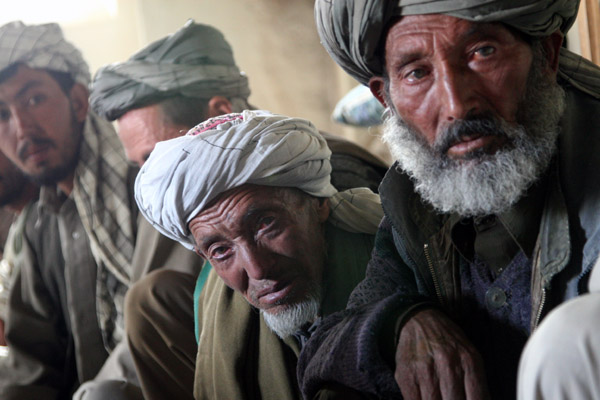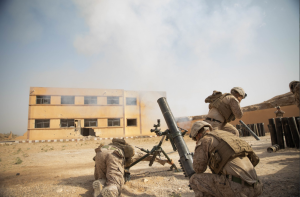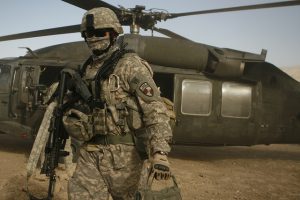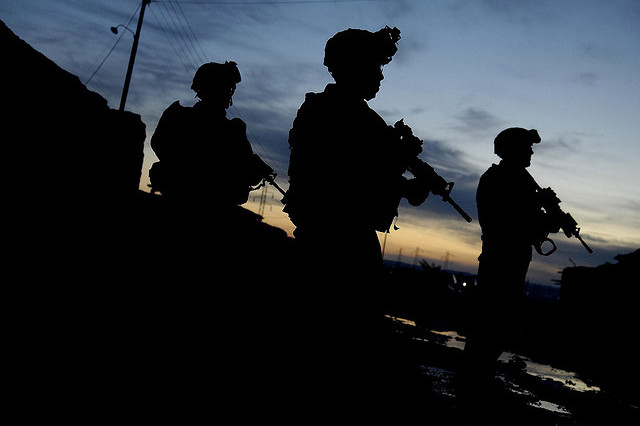by Fatemeh Aman
The Islamic State (ISIS or IS) recently threatened the Shia Hazara minority in Afghanistan with more attacks in retaliation for fighting in Syria in defense of President Bashar Al-Assad’s regime. “Unless they stop going to Syria and stop being slaves of Iran, we will definitely continue such attacks,” the message said.
Tensions are rising in Afghanistan over the government’s inability to provide security for its citizens. On July 23, two suicide attacks left at least 80 dead and hundreds injured in a peaceful demonstration held by the Hazara minority. IS claimed responsibility. Demonstrators were protesting peacefully against changes in a government development project that they felt would adversely affect them.
The Islamic State and former Taliban members who joined IS have conducted several bloody attacks against the Hazara minority over the last two years in a likely effort to instigate a religious or ethnic war in Afghanistan. Although Afghanistan is a multiethnic tribal society, no group or faction, including the Taliban, is interested in a religious war. Unlike in Iraq and Arab states, religion has not been a source of major conflict in Afghanistan. As a result, IS remains the sole proponent of a Shia-Sunni war in the country.
What Is the Protest About?
In May 2016, thousands of residents of Bamyan, a poverty-stricken province in central Afghanistan inhabited predominantly by Shiite Hazaras, started protesting a government decision to change the route of the TUTAP power grid to go through Salang—closer to the capital, Kabul—rather than Bamyan. The 500 megawatt electricity transfer project is aimed at increasing Afghanistan’s access to electricity. Financed by the Asian Development Bank, the grid stretches from Central Asian Turkmenistan to South Asian Pakistan through Uzbekistan, Tajikistan, and Afghanistan.
A “Light Movement” emerged to protest this plan. Some government officials initially supported the movement, promising to stay on the side of the people until their demands were met. A commission formed by the government to investigate the project route concluded that the route through Salang would be shorter more cost-effective. The commission also recommended that a 300 megawatt line be extended from the Doshi district of Baghlan to Bamyan. The protestors rejected these proposals, insisting that the route change from Bamyan to Salang discriminated against Hazaras by denying them a larger share of the electricity. Afghanistan has one of the lowest rates of electricity usage in the world. Only about 38 percent of Afghanistan population, as of June 2015, is connected to the grid.
After a number of incidents including abductions, kidnappings, and beheadings, Hazaras worry that they may have more to fear from IS and its sympathizers than from the Taliban. In 2015 a group of ethnic Hazara met with local Taliban commanders in the eastern province of Ghazni, asking them for protection against IS. According to one of the elders at the meeting, the Taliban agreed.
Who Are the Hazaras?
The origins of the Hazaras make up an estimated 10- 20 percent of Afghanistan’s population, are disputed. The widely accepted theory is that they are a mixed race of Iranians and Mongols who originally settled in the Hazarajat region in central Afghanistan. Nowadays they live in all parts of the country. In the mid-19th century, they suffered ethnic cleansing after staging a revolt, and the forces of the Pashtun Amir Abdul Rehman killed or displaced a major portion of their population.
During the Taliban era, Hazaras experienced extreme brutality and discrimination, including cases of mass executions. In 1998, when the Taliban captured the city of Mazar-e Sharif, they targeted Hazaras through house-to-house searches. Thousands of Hazara men and boys are believed to have been killed. The massacre was revenge for the killing of a thousand Taliban soldiers after a failed attempt to take Mazar-e Sharif in 1997.
The ethnic landscape of Afghanistan has changed since the overthrow of the Taliban in 2001. The constitution recognizes all ethnicities in Afghanistan. Today Hazaras have achieved hard-fought gains and have an active presence in the political arena. In all recent elections, Hazara votes have heavily influenced the outcome. Once an oppressed minority, the Hazara are now a politically vibrant sector of today’s Afghanistan and have shown that they are going to remain an essential component of Afghan society. In January 2015, after the lower house of parliament rejected 10 new Afghan cabinet nominees, some of them Hazara, hundreds of Hazaras took to the streets of Kabul to protest. All of these candidates were confirmed in April 2015 in the second round of voting. Hazaras fill several high-ranking academic and government positions, including several ministers in the cabinet of the National Unity Government.
Hazaras have also been viewed as affiliated with Iran based on the similarities in the religion. Although the majority of Hazara are Shiite—primarily Twelvers and Seveners—they do not follow Iran’s theocratic political system. A large Hazara community in Iran lives and works as refugees. But their shared faith has not protected them from discrimination and occasionally harsh treatment. Most recently, Iran has encouraged thousands of Iran-based Afghan and Pakistani Shia to fight in Syria.
The recent attacks have shaken confidence in the government and its ability to provide security for Hazaras. If this was one of the goals of Saturday’s attack, it has been achieved. At the same time, it has highlighted the differences between the majority of Afghans and a fanatic religious group, thus serving to bring people together rather than sharpen tensions between Sunni and Shia.
Photo: Hazaras in Afghanistan courtesy of Nasim Fekrat via Flickr.





